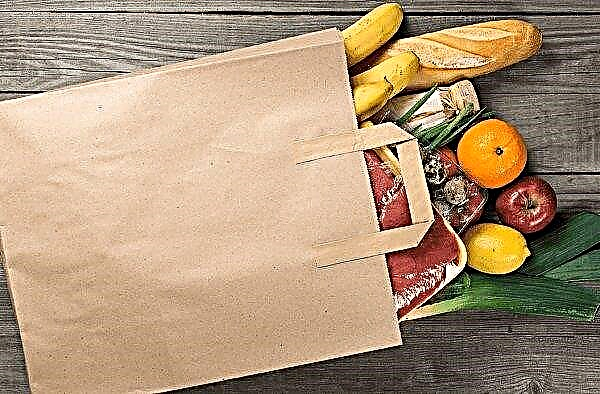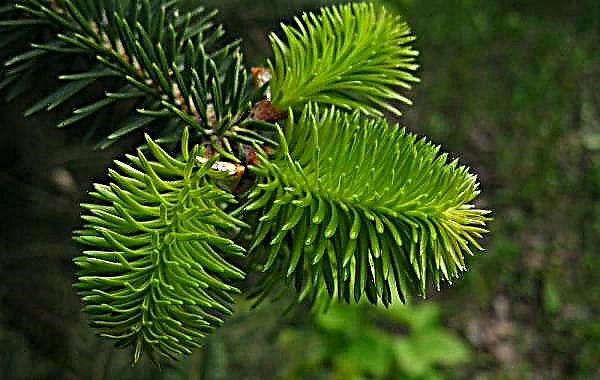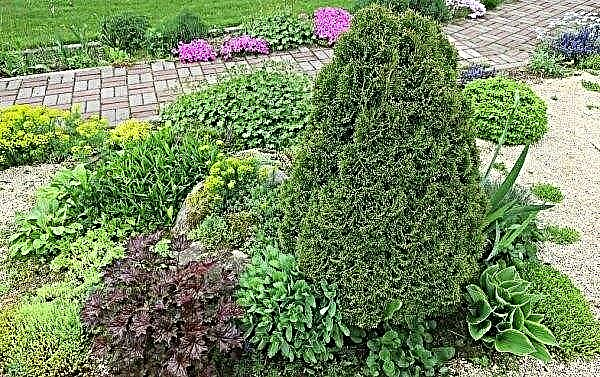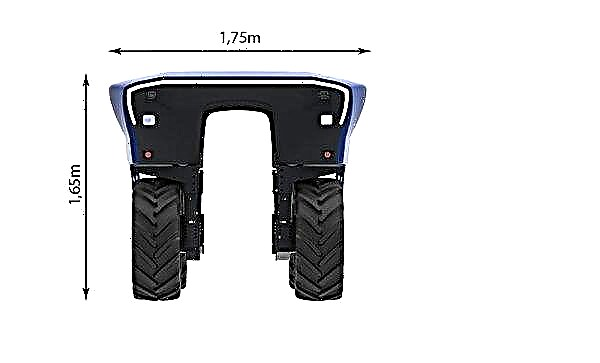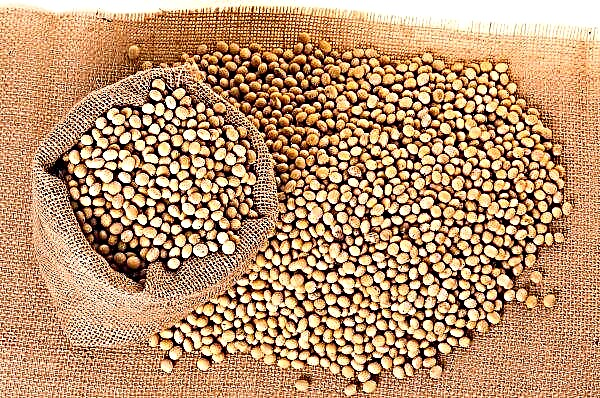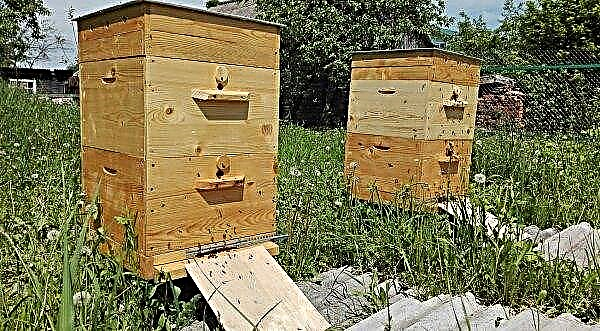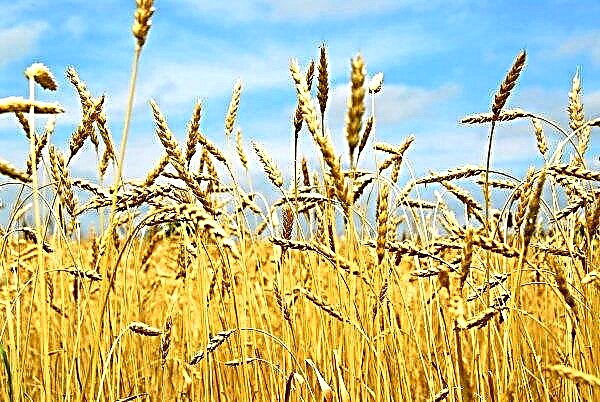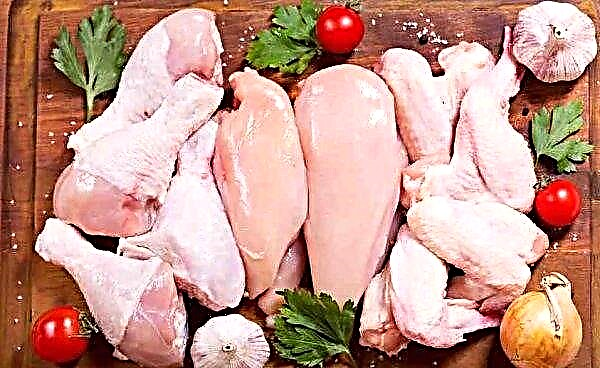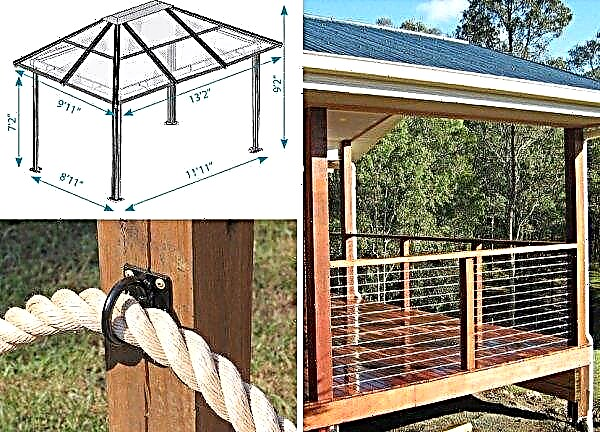Seed producers call Mamluk F1 the reference tuberous cucumber. The hybrid really has many positive qualities. Read about the characteristics of the variety and its cultivation below.
History and Characteristics
Before planting, gardeners should familiarize themselves with the characteristics of the variety, as well as its pros and cons.
Did you know? Cucumber is a close relative of pumpkin and melon, as it belongs to the pumpkin family.
Selection
The originator of Mamluk F1 is the Russian selection company Gavrish. Breeders have developed a hybrid in collaboration with specialists from the Research Institute of Vegetable Production of Protected Soil. In the State register of breeding achievements of Russia Mamlyuk F1 has been on the list since 2012.
Grade description
Mamluk F1 is an early ripe variety. From sowing to ripening takes 45-50 days. The variety is suitable for spring and summer turnover, so the crop can be harvested twice a season. Productivity - 11-14 kg with 1 m².
The hybrid is distinguished by parthenocarpic pollination and blooms according to the female type. This means that the plant is pollinated by itself. Insects or other factors are not needed for the appearance of ovaries. They can even do harm. If you plant an un-pollinated variety on open ground, the fruits often grow crooked and small. For this reason, the crop is intended for greenhouse cultivation.
Among the important varietal characteristics - resistance to a number of diseases:
- root rot;
- powdery mildew;
- peronosporosis;
- green speckled mosaic virus of cucumber (medium resistance).
Did you know? The largest cucumber in the world, more than 91 cm long, was raised by Brit Alf Cobb.
The bush has the following characteristics:
- medium height;
- powerful root system;
- short but strong lateral stems;
- 1-2 ovaries in a knot.
- cylindrical shape;
- the color is dark green;
- length 14–16 cm;
- weight 120-200 g;
- moderate tuberosity;
- white spike;
- the peel is strong, but not stiff;
- taste without bitterness.

Advantages and disadvantages
- The advantages of culture include:
- unpretentiousness to the substrate;
- resistance to infections;
- the possibility of double crop rotation;
- no need for pollination;
- good harvest;
- keeping quality;
- transportability;
- universality of application;
- high taste.
- The disadvantages are:
- the need for a greenhouse;
- the need to form a bush.
Sowing seeds in open ground
Mamluk F1 cucumbers are grown in a non-seedling way. Seeds are planted immediately in the greenhouse. For successful growth, you must comply with the deadlines, choose the right place and sow the material according to the correct scheme.
The timing
Mamluk F1 hybrid is suitable for a double turn (winter-spring and summer-autumn). When landing, the air should warm up to + 18 ° C. The optimum soil temperature is +10 ... + 12 ° С.
In the middle lane, the deadlines for planting are as follows:
- January for winter-spring traffic;
- second half of June for summer-autumn traffic.
Important! Sowing in the open ground in winter is carried out only in heated greenhouses.
Timing may shift by region. The main thing is to comply with the indicated temperature parameters. The farther north a culture grows, the later it will be planted. Accordingly, in the southern climate you can sow cucumbers earlier.
Seat selection and crop rotation
The strong root system of the Mamluk F1 hybrid allows you to plant a crop in any type of soil. There are also no special whims to lighting. You should not immerse the bushes completely in the shade, but the lack of bright lighting will not hurt the cucumbers. Thanks to this parameter, they can be planted in winter.
When choosing a place, you should avoid windy places and the proximity of groundwater. But since the hybrid is designed for greenhouse cultivation, no problems should arise. Greenhouses are built in places suitable for the growth of vegetables. They protect the landing from windiness.
For the growth and yield of cucumbers, it is important to follow the rules of crop rotation.
Good predecessors are:
- garlic;
- corn;
- early white cabbage;
- legumes;
- cauliflower;
- bow.
- Tomatoes
- turnip;
- eggplant;
- carrot;
- white cabbage of middle and late varieties;
- pepper.
Acceptable would be:
- corn;
- the beans.
It is undesirable to grow cucumbers in the same place for many years in a row. If the gardener has only one greenhouse, after harvesting, green manure can be planted.
The scheme and depth of crops
Seeds are sown in furrows dug at a distance of 0.5 m from each other. You can also dig holes, maintaining a distance of 0.5 m between ridges and 0.5 between holes. Sowing depth 3-4 cm.
Further care
Timely crop formation is impossible without the organization of proper care. Mandatory measures include watering, pinching, fertilizing and caring for the soil.
Watering
Cucumbers are watered 3 times a week, but you need to look at the drying of the soil. In warmer weather, more frequent hydration may be required. If the temperature drops, the frequency of watering is reduced.
The optimal type of watering is irrigation from a watering can. Water must be heated to a temperature of at least + 18 ° C. If tap water is used, it is advisable to first defend it.

Topping
The formation of a bush is a mandatory procedure for parthenocarpic hybrids among which Mamluk F1.
The manufacturer offers the following scheme:
- 1–6 knots blind;
- lateral shoots of 7-12 nodes are completely removed;
- pinch shoots of 13–25 knots on 1 leaf;
- the main stem is shortened after the appearance of 25 nodes.
Important! Be sure to tie the bush to the trellis as it grows so that the shoots do not break off under the weight of the fruits.
Fertilizer application
Feed four times during the growing season:
- before flowering;
- during flowering;
- with the mass formation of fruits;
- during the ripening of the crop.
Pay attention to the advice of experienced growers:
- do not use products with a high concentration of nitrogen - the tops will grow and the fruits will not form well;
- from organics, chicken droppings, manure and ash are suitable.

Soil care
Soil care requires mandatory cultivation. Spend it after watering, when the earth is more pliable. Loosen the aisles, being careful not to touch the soil at the base of the plant. Remove weeds at the same time as they are loosening - they are easier to remove from moist, fluffy soil. Additionally, cucumbers can be spud.
Harvesting
45-50 days after sowing, the fruits begin to ripen. Bushes bear fruit up to 2 months. The use of cucumbers is universal - they are excellent for fresh consumption and for pickling.
Cucumbers Mamlyuk F1 - quite a whimsical hybrid. It is better to grow it for professionals with specially equipped greenhouses. However, with proper care, this species will give a good harvest.



